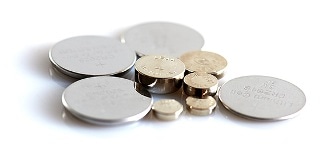May 3 2017
 (Credit: The Swiss National Science Foundation)
(Credit: The Swiss National Science Foundation)
Novel electrolytes have been produced by researchers supported by the Swiss National Science Foundation (SNSF) for rechargeable magnesium and sodium batteries. Developing alternative solutions to lithium-ion technology was the objective of the research group.
The SNSF-supported project aims to develop new materials for use in rechargeable batteries as an alternative to existing lithium batteries. There are numerous drawbacks for lithium-based batteries. The raw material availability is limited and the presence of a flammable liquid compound can cause safety problems. The recurrence of exploding mobile phones has exemplified this problem.
The recent work headed by Arndt Remhof of the Swiss Federal Laboratories for Materials Science and Technology, Empa, explains the potential of magnesium and sodium in the development of alternative technologies exclusively based on solid elements. Using these metals, the research team has developed experimental battery components.
Changing the material
Unlike cells that are using a liquid electrolyte, solid-state battery cells have been developed by the Swiss researchers using a solid compound, the design of which leads to a major technical problem. Ions – whether they are magnesium, sodium, or lithium – needs to be allowed to transfer through a solid medium. Within the battery, the movement of ions (positive charge) from one pole to the other pole facilitates electron (negative charge) displacement and as a result, an electrical current is discharged through an external circuit.
Solid electrolytes with a crystalline structure have been developed by the researchers to facilitate ion displacement. By replacing lithium ions with magnesium or sodium ions, the researchers had to fully revamp their crystalline architecture and employ new manufacturing processes and components.
I always like to compare our job to that of a football coach. You can bring the best elements together, but if you don't optimize the settings you won't achieve good results!
Arndt Remhof, Materials Science and Technology, Swiss Federal Laboratories
Sodium - a cheap material
The solid electrolyte developed by Arndt Remhof's team enables good mobility of sodium ions at 20 degrees – Which is an important point because a source of heat is required for ions to move and triggering a reaction at room temperature is technically a challenging task. Moreover, the electrolyte is non-flammable with chemical stability up to 300 degrees, thus addressing the various safety issues associated with lithium-based batteries. Hans Hagemann's group at the University of Geneva has also been involved in the development of a cheaper technology to produce this new solid electrolyte.
Unlike lithium, huge reserves are available for sodium, which is one of the two elements of table salt.
Availability is our key argument. However, it stores less energy than the equivalent mass of lithium and thus could prove to be a good solution if the size of the battery isn't a factor for its application.
Léo Duchêne, Empa
Magnesium - the perfect but complex material
The same group has also created a magnesium-based solid electrolyte. Until today, very little research had been carried out in this field. Although, making this element to move is a difficult task, it is still an attractive material as it is available in large quantity, lightweight, and there is no risk of explosion. However, the most important point is the presence of two positive charges in a magnesium ion as opposed to one positive charge in a lithium ion, meaning magnesium can store nearly double the energy in the same volume.
Some experimental electrolytes have already been employed to induce the movement of magnesium ions but at temperatures above 400 degrees. The electrolytes developed by the Swiss researchers have already shown similar conductivities at 70 degrees.
This is pioneering research and a proof of concept. We are still a long way from having a complete and functional prototype, but we have taken the first important step towards achieving our goal.
Elsa Roedern, Empa